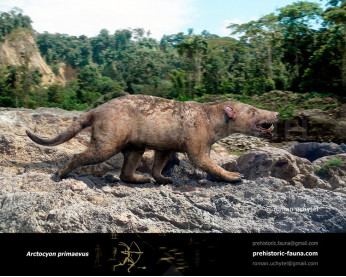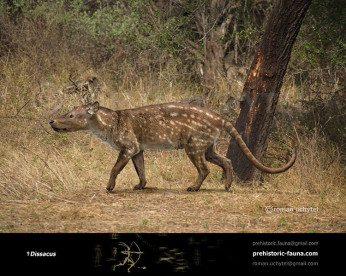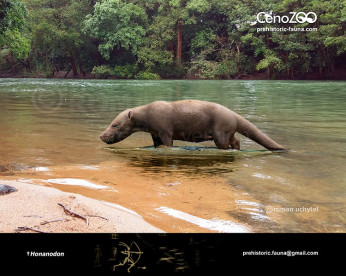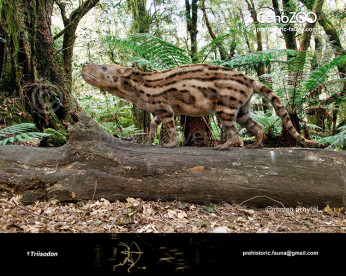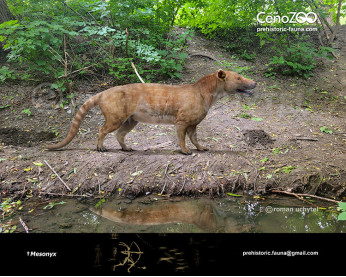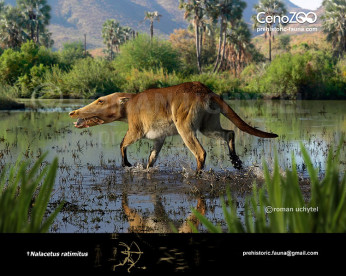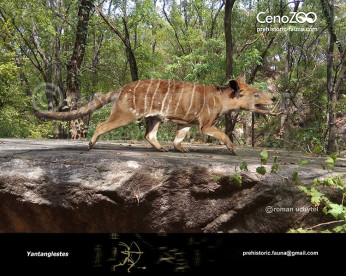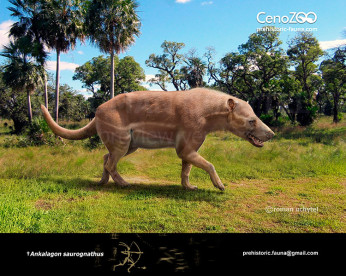Sinonyx jiashanensis
5757Sinonyx (Sinonyx Zhou et al. 1995)
Order: Mesonychia
Family: Mesonychidae
Subfamily: Mesonychinae
Size: 1.5 m in length, 60 cm in height, 50 kg of weight
Time period: the late Paleocene of China that lived about 56 million years ago.
Typical representative: Sinonyx jiashanensis Zhou et al. 1995
Sinonyx was a wolf-like ungulate Mesonychid mammal from the late Paleocene of China that lived about 56 million years ago. It was an early primitive form of mesonychid, which some experts regard as a distinctive group of carnivorous condylarths, which gave rise to artiodactyls. Sinonyx was about 1.5 m long, about the size of a modern grey wolf with a large elongated head, short legs and tiny hooves on all of its toes. It was built for stamina and strength and was well equipped to take care of itself by killing slower-moving prey or scavenging along sea shores. The tooth count was the primitive mammalian number (44) and the teeth were differentiated as are the heterodont teeth of today's mammals. The molars were very narrow shearing teeth, especially in the lower jaw, but possessed multiple cusps. The large skull had an extended occipital bone and large sagittal crest that contained a tiny brain. The large sagital crest indicates a powerful bite, for these are the bones which anchor muscle to the lower jaw or mandible; with the increased surface area indicating a large muscle mass.
Sinonyx (Sinonyx Zhou et al. 1995)
Order: Mesonychia
Family: Mesonychidae
Subfamily: Mesonychinae
Size: 1.5 m in length, 60 cm in height, 50 kg of weight
Time period: the late Paleocene of China that lived about 56 million years ago.
Typical representative: Sinonyx jiashanensis Zhou et al. 1995
Sinonyx was a wolf-like ungulate Mesonychid mammal from the late Paleocene of China that lived about 56 million years ago. It was an early primitive form of mesonychid, which some experts regard as a distinctive group of carnivorous condylarths, which gave rise to artiodactyls. Sinonyx was about 1.5 m long, about the size of a modern grey wolf with a large elongated head, short legs and tiny hooves on all of its toes. It was built for stamina and strength and was well equipped to take care of itself by killing slower-moving prey or scavenging along sea shores. The tooth count was the primitive mammalian number (44) and the teeth were differentiated as are the heterodont teeth of today's mammals. The molars were very narrow shearing teeth, especially in the lower jaw, but possessed multiple cusps. The large skull had an extended occipital bone and large sagittal crest that contained a tiny brain. The large sagital crest indicates a powerful bite, for these are the bones which anchor muscle to the lower jaw or mandible; with the increased surface area indicating a large muscle mass.

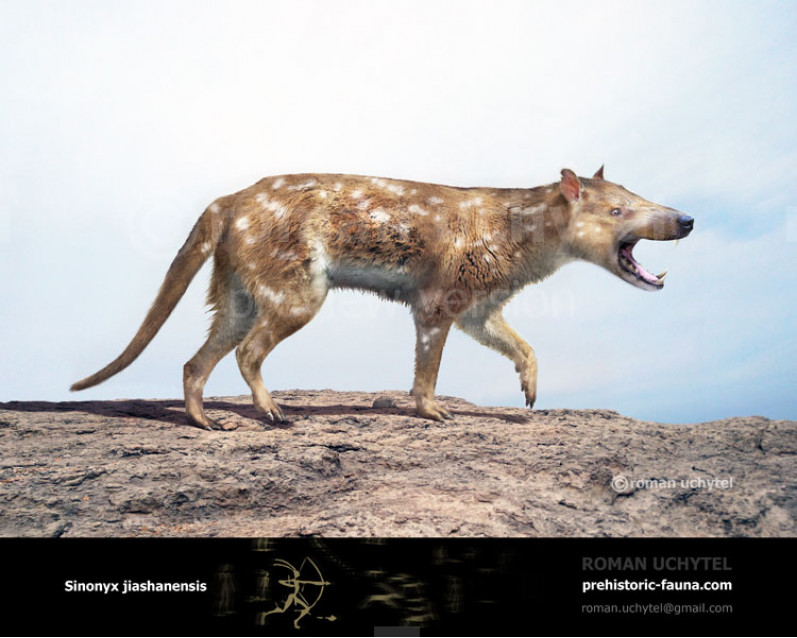
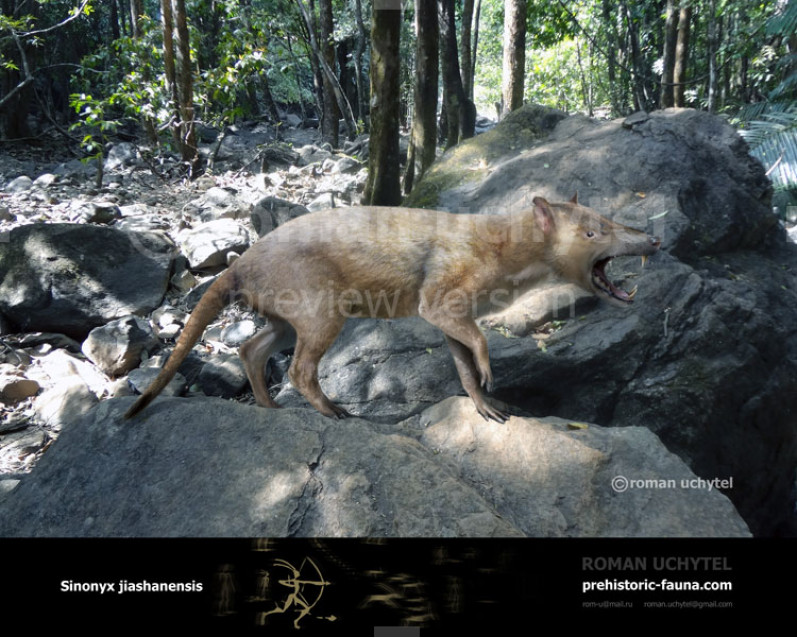
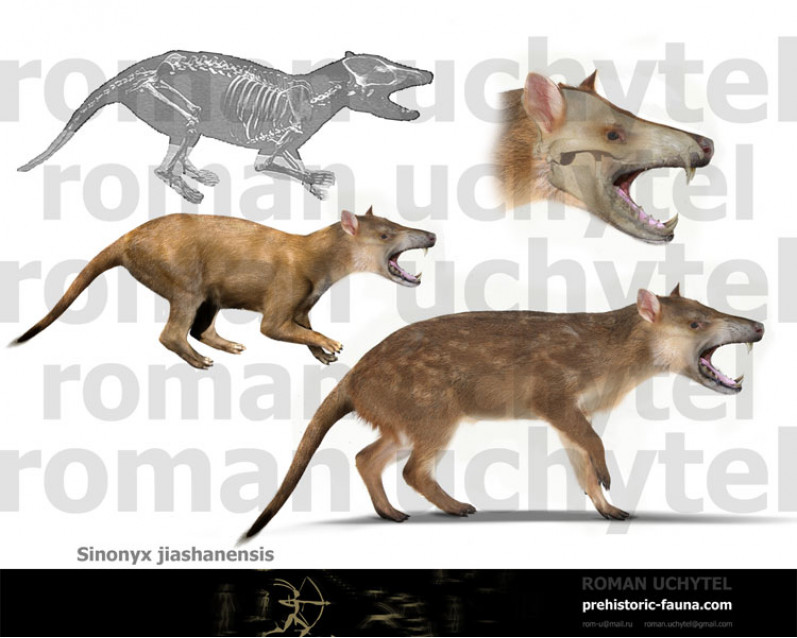



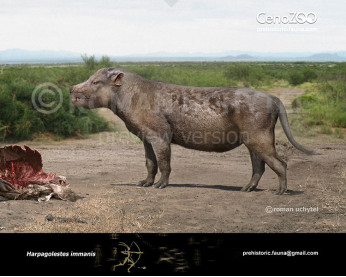
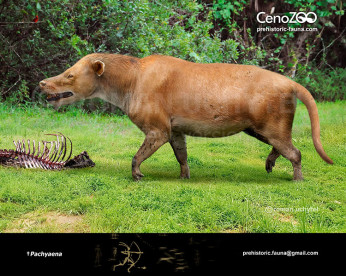
-346x277.jpg)
